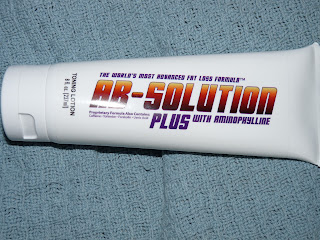Belly fat, the scourge of every middle aged American. Many have tried to defeat it and many have failed. I myself am currently fighting the good fight. Well another weapon has emerged in the battle and oddly enough it's a fat.
Safflower (Carthamus tinctorius) is a thistle like plant whose seeds are high in both oleic acid and linoleic acid. Linoleic acid has been linked to higher adiponectin levels. Adiponectin is a protein hormone that controls glucose regulation and fatty acid metabolism. When adiponectin levels are high body fat percentages are low in adults and visa versa.
I found two products of note containing the proper amounts of linoleic acids in them.
- Safslim found in local health stores selling for about $25 for 15 days worth.
- Spring Valley Safflower Oil found at Walmart selling for $15 for 15 days worth.
They both say 30 serving but that does not account for taking it twice per day as directed.
I am going to try the Spring Valley version first.
I did get a sample of the Safslim version and it is very pleasant tasting.
The below information can be found on the Re-Body website along with coupons for Safslim.
The Science of SAFActive78™ High-Linoleic Safflower Oil
Found in our SafSlim™ Belly Fat Supplements
Never heard of high-linoleic safflower oil? SafSlim™’s expeller-pressed, high-linoleic (78 percent) emulsified safflower oil (SAF) is a very effective way to target and reduce belly fat. In a 16-week study, Ohio State University researchers compared it with conjugated linoleic acid (CLA) by studying post-menopausal women who had high blood sugar and wanted to lose weight.
- These participants showed an average reduction of 6.3 percent belly fat and an average of 20.3 percent increase in adiponectin, an important belly fat hormone.
- SAF outperformed CLA in measurements of trunk adipose (belly fat) and adiponectin levels. There was no significant change in adiponectin or in trunk adipose loss with CLA.
- The study participants achieved results with no modifications to their exercise or diet regimens. However, SafSlim is intended to be used in addition to any reduced-calorie diet and exercise program.
Gout, B., Bourges, C., & Paineau-Dubreuil, S. (2010). Satiereal, a Crocus sativus L extract, reduces snacking and increases satiety in a randomized placebo-controlled study of mildly overweight, healthy women. Nutrition Research, 30, 305 – 313.
Leigh E Norris, Angela L Collene, Michelle L Asp, Jason C Hsu, Li-Fen Liu, Julia R Richardson, Dongmei Li, Doris Bell, Kwame Osei, Rebecca D Jackson, and Martha A Belury. Comparison of dietary conjugated linoleic acid with safflower oil on body composition in obese postmenopausal women with type 2 diabetes mellitus1–4. Am J Clin Nutr 2009;90:468–76.

Need some new exercises to try in 2015 or a refresher on your favorites? Here are 184: http://t.co/5mqUD0AOo1 pic.twitter.com/pAiUSqHzdw
— T NATION (@T_Nation) January 1, 2015
These #spices are PACKED with #antioxidants. Which is your favorite? http://t.co/C2ozB545dQ #nutrition pic.twitter.com/rTniBs8AVe
— Life Extension (@LifeExtension) January 1, 2015
01.01.2015 | New Year's Day fitness and strength challenge. Prove you want the podium http://t.co/3IRGccGVfR @USPlabs pic.twitter.com/jeGkyRL0cO
— john davies (@renegadestyle) January 1, 2015
Low-carbohydrate diet burns more excess liver fat than low-calorie diet.
Press: http://t.co/xX7NGG4eZ5
Science: http://t.co/vIEtYuJORl
— Michael Eades, M.D. (@DrEades) December 8, 2014










